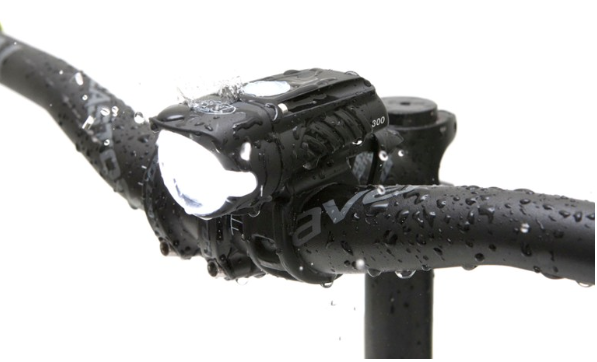From CyclingSavvy.org
by
We are now in the time of short days and long nights, and so it’s a good time to talk about bicycle lights.
And there’s good news. Thanks to efficient light-emitting diodes (LEDs), bicycle lights can be bright while drawing meager power from a small battery or generator.
Even better news — they won’t draw all the cash out of your wallet.
Like the horsepower race…
The trend can go to excess. Some of today’s bicycle headlights have product names like “Atomic”, and I kid you not, “Blinder” — only too true. Brighter, brighter, brighter… 200, 400, 1000 lumens. (The lumen is a measure of light output.)
The lumen war reminds me of the mid-20th-century horsepower race among big American cars. As in “my car is better than yours because it has a V8 engine with more horsepower!”
Why beam pattern matters
Lumens count light in every direction, but it matters in which direction the light goes. Any bicycle headlight bright enough to light your way should have a special beam pattern, like a car headlight, for at least four reasons:
- Efficiency: There is no point in using electrical power to produce wasted light.
- Clarity: Light thrown upward illuminates dust, fog, mist, rain, snow — washing out the bicyclist’s view of the riding surface.
- Glare reduction: a headlight that spews light upward glares into the eyes of oncoming bicyclists, motorists and pedestrians. Stray light from a properly-designed headlight is still bright enough to reveal you.
- Even illumination: a well-designed, shaped headlight beam tapers down in brightness closer to the bicyclist, avoiding a hotspot.
Image courtesy of NiteRider


